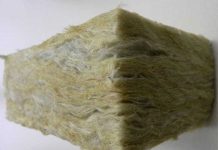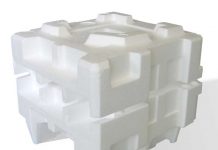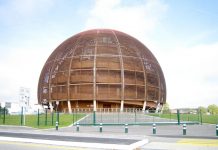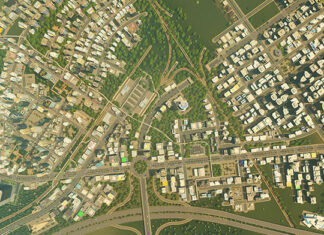Reinforced concrete, a remarkable construction material, is one of the greatest inventions of modern architecture. It continues to be among the primary materials that shape our modern world, through the totally new and unprecedented forms, bold cantilevers, and many innovations it brought.
In this article, we will explore fundamental principles, historical background, advantages and disadvantages of reinforced concrete in architecture. We’ll also share with you some renowned examples of reinforced concrete buildings.
Next section, we’ll start with the structural definition of reinforced concrete. Then we’ll dive into its historical development to understand how this material has been such an indispensable part of our built environment.
What is Reinforced Concrete?
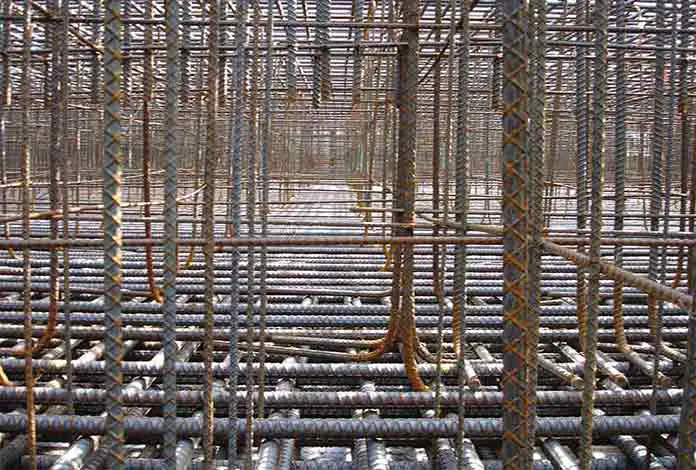
Reinforced concrete is a very strong building material produced by using ductile structural steel and brittle concrete together. Inside, there is steel that is resistant to pulling and bending; Around the steel, there is concrete that protects the steel from external influences and is resistant to pressure.
Concrete, which does not have enough strength to be used as a structural element, can be shaped as desired with the prepared molds. The most important feature of steel is that it’s resistant to shrinkage and, at the same time, it makes ductile fractures.
This contributes to the slow collapse of damaged structures. Thus, reinforced concrete, which makes it possible to cover the shortcomings of concrete with steel reinforcements, is one of the most preferred building materials.
Historical Development: From Concrete to Reinforced Concrete
Pozzolan concrete that Romans found has been developed in the historical process and contributed to the formation of modern concrete material used today.
The fact that concrete is only resistant to pressure when used alone and it is impossible to produce high-rise, durable structures has required new searches and techniques.
After John Smeaton discovered modern concrete, Louis Vicat produced cement in an artificial way in 1812. In 1842, Joseph Aspdin found Portland Cement and formed the basis of the material.
All these new searches led to the most important unity in the history of building production: Concrete and Steel. The other important historical developments are:
1) French farmer Joseph Lambot constructed a concrete canoe with a mixture of concrete and iron in 1848, and exhibited this product at the Paris World’s Fair in 1855.
2) French Engineers Coignet and Monier took out the patent for reinforced concrete material in 1855.
3) Engineer François Coignet produced reinforced concrete walls and flooring in 1855, and used them in a structure.
4) In 1867, a French gardener, Joseph Monier designed a flowerpot for his flowers with the help of concrete and iron sticks, and patented this new material.
5) William E. Ward, whose houses were damaged by fire in the 1870s, designed a new home for his family to protect them from fire danger. This building is known as the first house in America built with a reinforced concrete structure.
6) In 1892, François Hennebique took the use of reinforced concrete a step further in the building industry by discovering the T-beam. Furthermore, for the first time, he used the stirrup that allows the steel reinforcements to adhere better to concrete.
7) Pont de Chatellerault, France’s first reinforced concrete bridge, was built in 1899 by Hennebique.
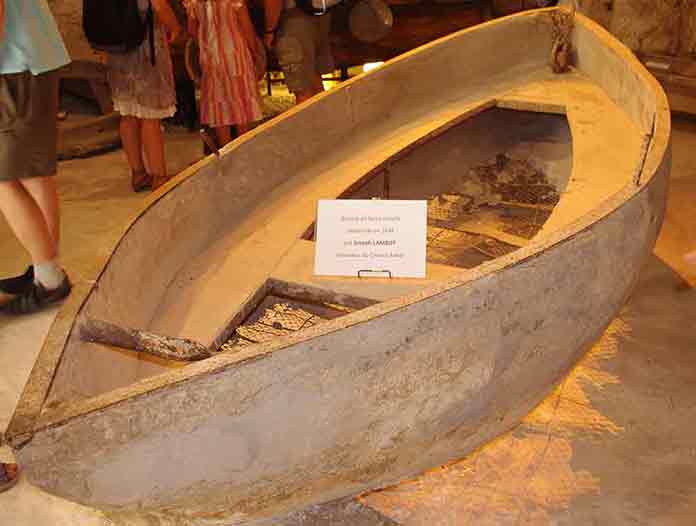
The use of concrete as a prevalent material in buildings took place in the early 20th century. One of the biggest reasons for this is the production of mixer vehicles that ensure the conservation of the concrete at the construction site, and the opportunity of bringing ready mixed concrete to the site.
These tools increase the use of ready-mixed concrete in the world and facilitate the casting process of concrete.
In addition, the production of concrete pumps, which significantly increase the construction speed, has facilitated the design of high-rise and large-scale structures.
Key Components and Materials
Have you ever wondered about what components reinforced concrete consists of? Its strength lies in its carefully chosen components. Let’s take a glance at the essential materials that come together to create this material.
1. Cement: The Glue That Binds
Cement acts like the glue that holds the material together. Made from limestone, clay and other minerals, it’s a fine powder. When it is mixed with water, cement forms a paste that coats the aggregates and binds every material in the mix. Thanks to this binding, concrete gains its strength and durability.
2. Aggregates: The Supporting Cast
Aggregates are stones, rocks, sand and gravel. Making up the majority of the mixture, they increase the volume of the concrete. Just like cement, aggregates also add durability and strength.
Typically, a reinforced concrete mixture includes a combination of different-sized aggregates to create a well-graded mix enhancing properties and workability.
3. Water: The Magic Elixir
Another essential ingredient is water, which is so crucial while seems simple. Water is the catalyst for the chemical reaction that causes cement material to harden and gain strength.
4. Reinforcing Steel: Adding Muscle
The other crucial element that creates reinforced concrete is reinforcing steel. Typically produced in the form of bars (rebars) or mesh, it is made of high-strength steel.
Reinforcing steel gives the mixture the ability to handle tension, creating a good team with concrete.
This harmonious partnership results in a material that’s not only strong but also flexible enough to withstand various forces.
Application of Reinforced Concrete
Reinforced concrete bearing systems can be produced in two ways: On-site production and prefabricated (precast) production.
1. On-site Production
The construction of reinforced concrete structures is a process that does not require skilled labor. Architects and engineers should make good teamwork during the planning phase of the project in order to run the construction management and production smoothly.
The reinforced concrete building project drawn by the architects is sent to the civil engineers. Engineers create the static project by making the necessary calculations for the strength of the structure.
In this static project, concrete class (such as C25, C30, C35), amount of concrete, section calculations, the amount, class (S220, S420 etc.) and the diameter of the steel reinforcements are determined.
Column and beam types, locations and numbers of them are also decisions that architects and engineers should consider in coordination. Because all these decisions are the main factors that determine the flooring, roof type, wall type and building materials to be used and affect the architectural design.
Things to do on the site:
1) Firstly, the axes in the static project for the production of the reinforced concrete carrier system are marked on the field.
2) Ironmasters at the construction site cut steel reinforcements with the required dimensions. Then they bend stirrups to the measurements calculated by the engineer.
3) Stirrups, which allow the steels to stand together, are shifted to the main reinforcement at certain intervals.

4) Formwork masters prepare concrete molds that will wrap around the steel bundles. In order for these molds to be easily separated from the concrete, the inner surface is lubricated.
5) Molders wrap this mesh steel reinforcement system with concrete molds (usually made with wood).
6) It’s necessary that molds be supported with buttresses to remain standing after pouring concrete.
7) When the formwork system is prepared, concrete in the mixer is poured into the molds. The required air temperature for concrete pouring is between +5 and +35 degrees. If the weather conditions are unfavorable, concrete pouring is delayed or additives are used.
8) Concrete must be distributed homogeneously throughout the formwork in order for the system to work properly. Tools such as vibrators are often used to ensure this even distribution. As a result of this vibration, the semi-fluid concrete spread more evenly in the mold.
9) When the concrete reaches the required strength, the molds are disassembled. Although the mold removal time varies depending on the type of the building element, environmental conditions and the quality of the concrete, the average removal time is 7 days.
10) In order to minimize the shrinkage rate of the concrete, after the molds are removed, the face of the concrete should be continuously wetted for 28 days.
Applying these steps, the reinforced concrete carrier system can be produced in accordance with the project and it will show its structural strength 28 days after concrete casting.
2. Prefabricated Reinforced Concrete Production
Reinforced concrete elements may sometimes be desired to be produced outside the construction site. While production can be done with standard sizes in factories, it can also be made in custom sizes optionally.
The prefabricated elements produced are transported to the construction site and assembled together with various connection apparatus such as anchors.
Compared with on-site production reinforced concrete:
- The pre-production of reinforced concrete panels is not affected by weather conditions.
- Since the process on the site is made up of joining the elements, the structure can be built in a much shorter time.
- It is not necessary to wait for the setting time or count the days for mold removal. As soon as the plans of the project are approved, reinforced concrete elements can be produced in the factory.
Advantages of Reinforced Concrete
- Can be easily processed and shaped so that many building elements can be designed with reinforced concrete.
- There is little need for maintenance. It is less affected by environmental conditions than materials such as steel and wood. This in turn reduces the cost of repair and maintenance.
- Material content can be found in many parts of the world: aggregate, water and gravel. By this means, reinforced concrete is an economical and international material.
- Doesn’t require detailed and qualified workmanship.
- Quite resistant to pressure, making it suitable for high-rise building construction. Moreover, it is very resistant not only to pressure but also to fire.
- It is electric-proof and abrasion resistant.
- Remains durable for many years and even increases its strength for a length of time.
- Pests and insects can’t inhabit reinforced concrete.
Disadvantages of Reinforced Concrete
- Molds shouldn’t be removed until the concrete reaches the required strength. This extends the building process.
- It is a heavy material despite its strength. This causes static problems in structures where a wide opening is passed. Read more here.
- Reinforced concrete structures are affected by environmental conditions during construction. Construction activities are temporarily disrupted when there are no suitable weather conditions.
- It is an unsustainable material that is quite difficult to recycle. It is both costly and difficult to reuse in contrast with steel.
- The error margin is high in reinforced concrete. More materials are used since a high safety coefficient should be taken in static calculations.
- It is a difficult material to strengthen and make subsequent changes. Therefore, during the planning phase, potential additions and possible load increases should be calculated.
Examples of Famous Reinforced Concrete Buildings
1. Villa Savoye
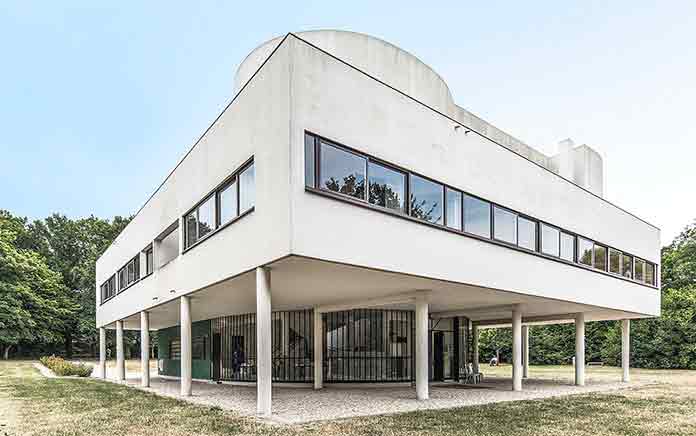
Architect: Le Corbusier
Location: Paris, France
Construction Year: 1931
Villa Savoye is one of the most important Le Corbusier buildings that the 5 basic principles of him can be clearly seen. This modern reinforced concrete structure was designed like a life machine rising above the pilotis.
2. Unité d’Habitation

Architect: Le Corbusier
Location: Marseille, France
Construction Year: 1952
Another project of Corbusier, one of the most important modernist architects that comes to mind in the design of reinforced concrete structures, is Unite d’Habitation.
Mass housing projects started to be produced in Europe, where the housing shortage was experienced after the Second World War. Perhaps the most important of these is Unite d’Habitation, which was produced for the working class, with a capacity of over 1600.
The building took its place in architectural history as one of the most famous examples of Brutalist architecture later.
3. Fallingwater House

Architect: Frank Lloyd Wright
Location: Pennsylvania, USA
Construction Year: 1937
If asked what is the most known residential structure of modern architecture, our answer would definitely be the Fallingwater House. This house is among the cult buildings of modern architecture, which has been inspiring architectural designs for nearly 100 years.
Reinforced concrete bearing systems have brought many innovations in the field of architectural design. The most important innovation brought by Wright with this building is reinforced concrete consoles, which were quite brave for that time.
Another essential feature of the building is that it was built on the waterfall, not opposite the view of the waterfall, and blazed a trail in architecture in context.
Conclusion
To sum up, reinforced concrete is a modern building material that combines steel and modern concrete. It has played an important role in shaping the built environment for hundreds of years. From impressive skyscrapers to impossible bridges, this durable material has proven its strength, durability and versatility.
Today, architects and civil engineers push the boundaries of architectural design using reinforced concrete in different ways. Furthermore, as material science developed, engineers fix the downsides of reinforced concrete material with additives and chemicals.
Thank you for reading this text and hope you enjoy it. Feel free to share your knowledge and opinion about this material.
FAQ
A: It is a composite material that combines concrete with steel reinforcement (rebars or mesh).
Regular concrete lacks tensile strength and can crack under tension, while reinforced concrete can handle both compressive and tensile forces, making it much stronger and more durable.
A: No, its production has some environmental impact due to cement production, a significant source of carbon emissions. Furthermore, cities with too many reinforced concrete buildings are affected by global warming more.
A: Yes, it is commonly used in earthquake-prone areas thanks to its ability to withstand seismic forces. The steel reinforcement helps absorb and distribute the energy generated during earthquakes, preventing catastrophic failures.
A: Yes, it has excellent fire-resistant properties. While the outer layers of concrete may spill under intense heat, the inner core retains its structural integrity, which makes it suitable for fire-resistant construction.
A: Yes, it can be recycled. After demolition, the concrete is crushed into aggregate, and the steel reinforcement is separated for reuse or recycling. By recycling it, you can help reduce waste and promote sustainability.
A: With proper design, construction and maintenance, reinforced concrete structures can last for several decades or even centuries. Some historical reinforced concrete buildings have stood the test of time and remain in use today.


